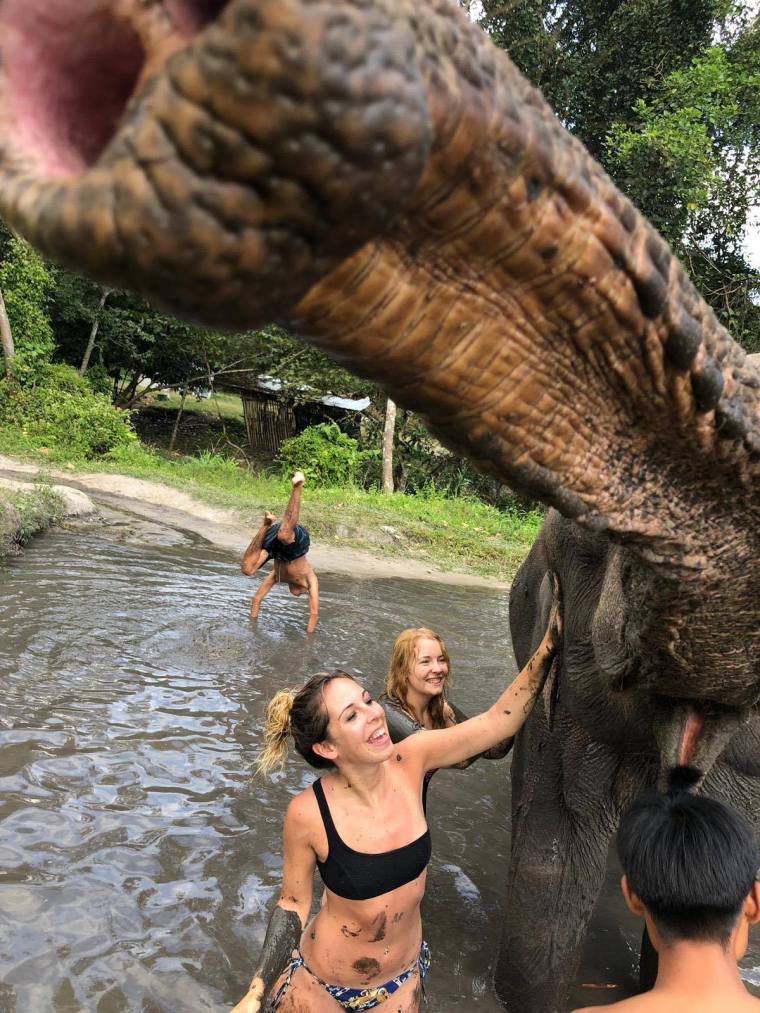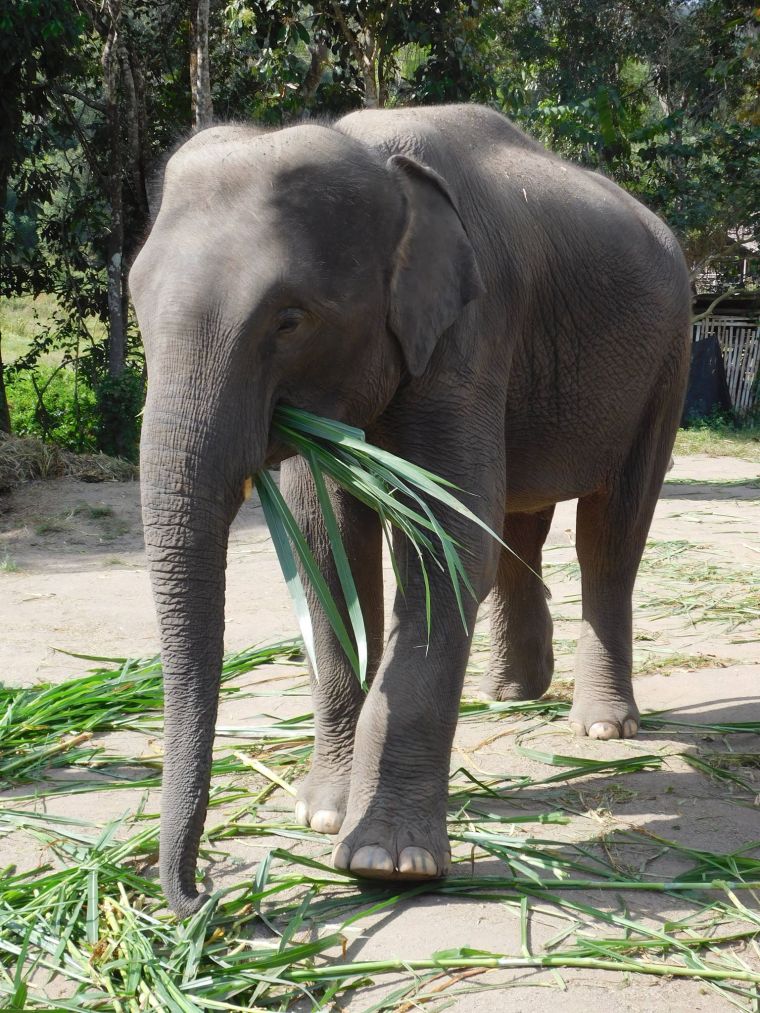Elephant-riding has been high on traveller’s bucketlists for a long time. Awareness of the abject cruelty involved in forcing animals to perform for and serve humans is growing, and yet I was still horrified to hear travellers talking about this in groups, and signs advertising it around Thailand. Were they completely oblivious? Or did they just not care as long as it makes a good insta photo?
Elephants are one of my favourite animals. I was overwhelmed to see African elephants living in the wild during my travels in Botswana and Namibia. However, I have felt extremely sad that I had only seen Asian elephants in India that were facepainted and forced to lug overweight tourists up and down steep slopes to visit forts as entertainment. It can be hard to avoid seeing animal cruelty as a vegan traveller.

But a new trend is growing, and one which on the face of it seems to improve conditions for elephants: ethical sanctuaries. While it didn’t seem I’d be able to see any elephants in the wild on my trip to Thailand, I was keen to visit an ethical elephant sanctuary. There are many that seem to have cropped up, particularly around Chiang Mai, advertised on boards and in hostels around the city.
But how ethical are ‘ethical’ elephant sanctuaries?
Inevitably, where there has been an increase in interest and tourist money, an increase in less than ethical businesses has followed to meet demand. While many sanctuaries market themselves as being a ‘home for happy elephants’, many still keep them in a situation of unnatural captivity. Some are still forced to play football or other activities with tourists that wouldn’t be possible if the elephants hadn’t been cruelly trained to do so.
Looking at reviews online helped me to find the right one: a review showed me an option I had been considering still shuts the elephants in tiny boxes as soon as the tourists leave.
Ethical Elephant Sanctuary, Chiang Mai
Happily, my experience at Ethical Elephant Sanctuary was wonderful and remains my most cherished memory from Thailand. Elephants here have been rescued from the tourism and logging industries. Here was how the day unfolded:

Breakfast with elephants
I opted for a full day and was picked up at my hostel early in the morning. After a two hour drive out of Chiang Mai, we pulled up in a giant open field where elephants were grazing. I wasn’t hopping any less than the children to get out and say hello.
First we were dressed in the cloth of the hill tribe who cared for them so that they wouldn’t be startled by us. Then we were able to feed them, holding out sugar cane and bananas that they would pluck from your palm with their ever-reaching trunks.
Going for a stroll
After a break, we went for a walk through the jungle. The elephants roamed freely and we walked alongside or behind them. Seeing them interacting with each other, pausing at will to scratch an itchy bum on the nearest tree (the elephant!), we really came to see how each elephant was a personality in their own right.
The importance of breaks
We had a two-hour break for lunch during which time the elephants had a break from us. This is really important for their wellbeing, as it’s not natural for them to be around humans all day. During this time they rested in the shade of an open field while we had a basic but tasty meal of veg, rice, and fruit.
Bath time for elephants
As it broke into the hottest time of the day we went down to the river to bathe and help the elephants to cool off. I was nervous as they all clambered in the same space to make sure I wasn’t going to get crushed between them.
Really seeing them up close like that makes you appreciate just how vast they are, and yet how gentle. We scooped water up to cool their bodies and helped them to rub mud against their flanks. They retaliated by squirting water at us through their trunks!
Again, seeing them play together was really special. When they were tired of us, they got up and left the water of their own volition to return to the field, and it was when the elephant, rather than the keeper said so, that bath time was over.

Afternoon snack
Natural vegetarians, elephants generally graze all day in the wild, so by the afternoon they were ready for more snacks. It was impressive to see them munch through whole bunches of bananas in one go.
Saying goodbye
We left by late afternoon, leaving them to spend the rest of the day and evening alone. The little kid in me welled up and I felt a bit emotional leaving them, even though I know that for them this was the norm. I asked how much it was to rescue an elephant from logging: 2 million Baht (about £50k). So my dreams there were shot, but if anyone rich reads my blog, please save an elephant on my behalf.
If you can’t afford to save an elephant but would like to visit them during your travels in Asia, here are some tips for finding genuinely ethical sanctuaries.

Key things to look for:
- Elephants should not be bound to posts by rope or chains;
- They should not be performing for tourists or partaking in any activities they wouldn’t naturally do in the wild. Normal activities such as bathing are not okay if they are forced to do them more than they would naturally e.g. multiple times or constantly throughout the day;
- They should not be made to interact with humans for too long without breaks;
- You should not touch an elephant too much or climb onto their bodies;
- They should always have access to food and water;
- There should not be large numbers of tourists each day. Look for a sanctuary that takes restricted numbers;
- Carers should respect the way the elephants express themselves and not force them to continue any activity.

